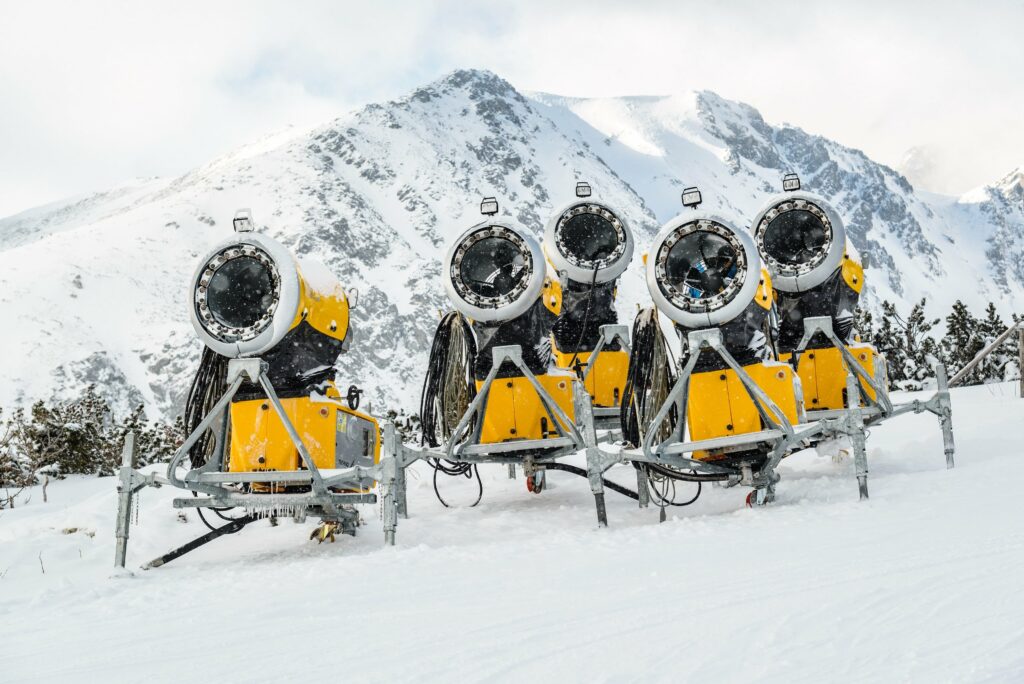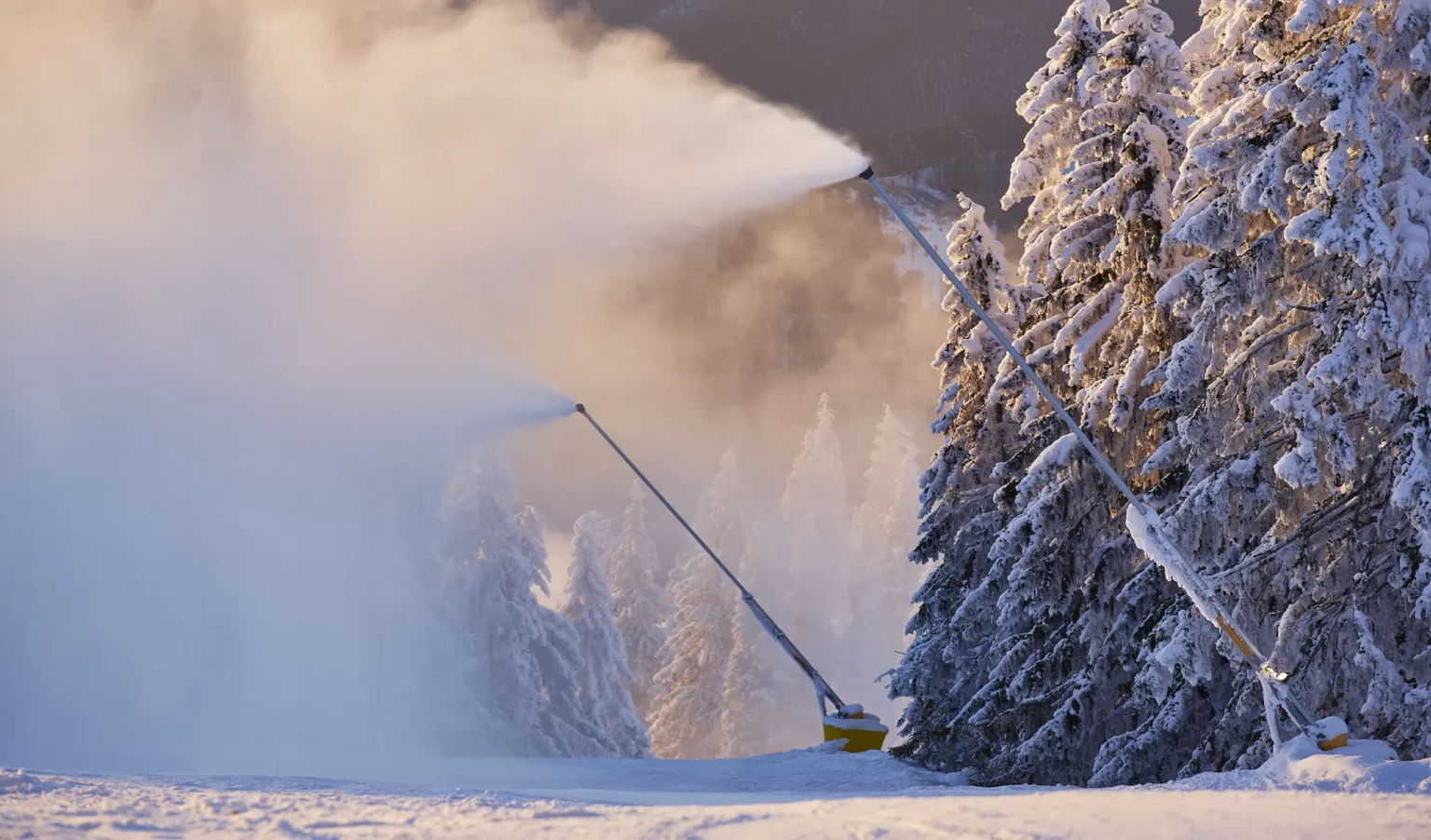Snow cannons are used to produce artificial snow to supplement or replace natural snow on ski slopes. But how do they work?
Snow cannons mix water and air under specific temperature and pressure conditions to produce artificial snow.
This process requires an ambient temperature generally at or below 0°C, although some more modern systems can operate at slightly higher temperatures.
The snow cannon sprays a finely atomised mixture of water and compressed air into the air. The air pressure helps disperse the water droplets and cool them.
The importance of water crystallisation
If the air temperature is low enough, these droplets freeze and turn into ice crystals, forming artificial snow.
The key to snow formation lies in the crystallisation of water from a liquid to a solid state.

This process is facilitated by the low temperature and the presence of freezing nuclei, which may be naturally present in the air or artificially added in certain snowmaking systems to improve the efficiency of crystallisation.
There are two main types of snow gun: compressed air guns, which use a mixture of air and water under pressure, and fan guns, which use a large fan to disperse water droplets in the air, with compressed air nozzles to help form the snow.
Cannons extend the ski season
The production of artificial snow requires a significant amount of water and energy.
Ski resorts are increasingly taking into account the environmental impact of artificial snowmaking, by optimising the use of water and seeking to reduce energy consumption. thanks to more efficient technologies.
The snow produced by snow cannons makes it possible to extend the ski season and ensure constant sliding conditions, especially in regions where natural snow may be insufficient.
However, the quality of artificial snow can vary from that of natural snow, particularly in terms of texture and behaviour under different weather conditions.

